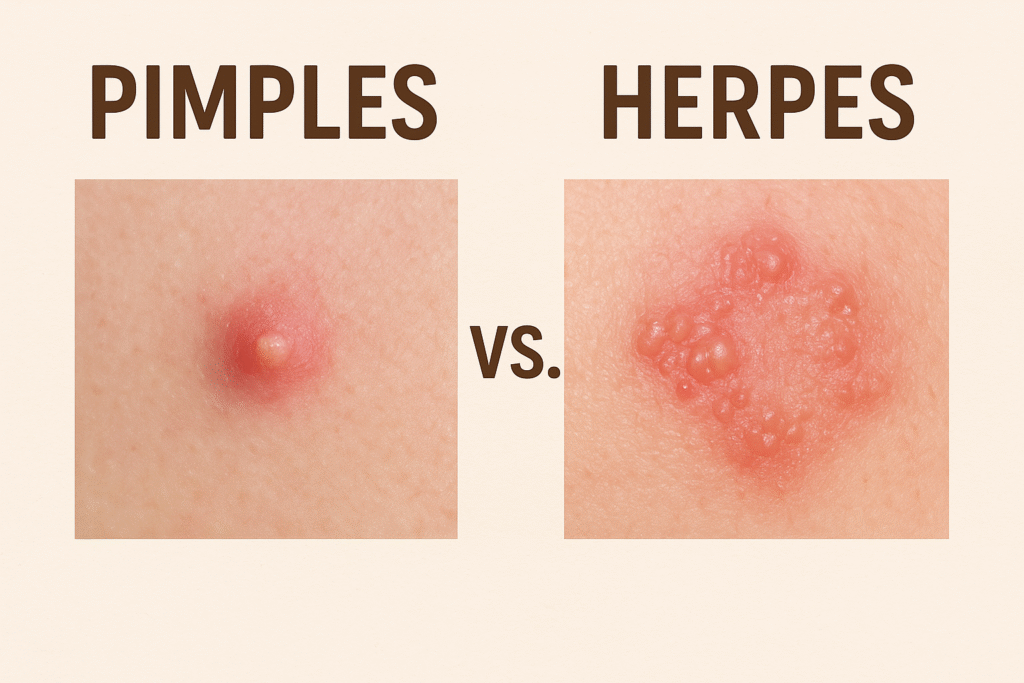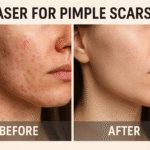
Pimples vs. Herpes: Understanding the Differences and Skincare Guidance
By Dr. Alexandra Morris, Board-Certified Dermatologist
Introduction
Acne pimples and herpes simplex virus (HSV) lesions often get confused due to their similar appearance on the skin, especially when they appear on sensitive areas such as the face, lips, or genital region. However, they are very different conditions with distinct causes, symptoms, and treatments. Understanding these differences is crucial for proper care and to avoid complications. This article draws on dermatology insights and the latest medical evidence to clarify these differences and offer actionable skincare advice.
What Are Pimples and Herpes? Causes and Characteristics
Pimples are inflamed spots that occur when hair follicles become clogged with oil, dead skin cells, and bacteria. They are common in acne and typically manifest as firm, raised bumps filled with white or yellow pus. Pimples occur due to pore blockages and are affected by factors such as hormonal changes, stress, hygiene, and genetics.
Herpes simplex virus (HSV) causes herpes, a contagious viral infection characterized by clusters of painful, fluid-filled blisters that often break open and crust over. There are two types: HSV-1, mainly responsible for oral herpes (cold sores), and HSV-2, which more commonly causes genital herpes. Unlike pimples, herpes lesions tend to appear in clusters and are preceded by tingling or burning sensations.
Key Differences Between Pimples and Herpes
- Appearance: Pimples are usually single bumps with white or yellow pus, firm to the touch. Herpes lesions form clusters of soft, clear fluid-filled blisters that are tender or painful.
- Sensation: Pimples generally have no early warning signs. Herpes often causes itching, burning, or tingling before the blisters appear.
- Duration: Pimples may last days to a week or more. Herpes lesions can take 2 to 4 weeks to heal without scarring.
- Location: Pimples can occur anywhere there are hair follicles. Herpes outbreaks tend to recur in the same spots, often around the lips or genital area.
Dermatologist-Recommended Treatments and Skincare Tips
Treatment for Pimples
Dermatologists recommend a multi-step approach to acne care:
- Topical cleansers: Use gentle, non-irritating cleansers such as CeraVe Acne Foaming Cream Cleanser or Neutrogena Clear Pore Cleanser/Mask containing benzoyl peroxide to kill acne-causing bacteria and reduce inflammation.
- Targeted treatments: Salicylic acid products and topical retinoids help unclog pores and promote skin renewal.
- Medical procedures: In-office corticosteroid injections can quickly reduce large, painful pimples. Chemical peels with glycolic acid exfoliate skin layers, accelerating healing and clearing pores.
- CeraVe Acne Foaming Cream Cleanser — dissolves dirt and excess oil with 4% benzoyl peroxide.
- Neutrogena Clear Pore Cleanser/Mask — contains 3.5% benzoyl peroxide, effective as daily cleanser or mask.
- PanOxyl Acne Creamy Wash — 10% benzoyl peroxide, best for body acne treatment.
Treatment for Herpes
Management of herpes involves antiviral medications and supportive skincare:
- Antiviral therapy: Prescription oral antivirals such as aciclovir, valaciclovir, or famciclovir help reduce the severity and duration of outbreaks. Aciclovir is preferred for cost-effectiveness in many cases.
- Topical care: Applying soothing, non-irritating emollients around the lesions can reduce discomfort. Avoid directly applying heavy moisturizers on active blisters to prevent irritation.
- Preventative measures: For frequent outbreaks, prophylactic antivirals may be recommended by dermatologists, especially before procedures that damage skin.
- NeoGenesis Antiviral Gel and Barrier Renewal Cream to soothe skin, reduce outbreak duration, and prevent scarring.
- Mild, non-irritating cleansers used gently on affected areas.
Common Myths and Misconceptions
- Myth: Acne is caused by dirt or poor hygiene. Fact: Acne results from clogged pores and inflammation; excessive washing can worsen it.
- Myth: All bumps around the mouth are just pimples. Fact: Some lesions may be herpes and require different treatment.
- Myth: Eating chocolate or greasy food directly causes acne. Fact: Research shows no direct causal link, though diet can influence skin health indirectly.
Regional Considerations: Skin Type and Climate in the U.S.
Skin types and local climates in the U.S. regions can influence acne and herpes flare-ups. For example, humid and warm climates (like in southern states) may increase sweat and oil production, potentially worsening acne. Dry, cold climates may cause skin irritation, potentially triggering herpes outbreaks due to skin barrier disruption. Tailoring skincare with appropriate moisturization and sun protection is key.
Frequently Asked Questions (FAQ)
Actionable Takeaways
- If you notice bumps or blisters, observe key differences such as clustered clear blisters (herpes) vs. single pus-filled pimples to identify the condition.
- Visit a board-certified dermatologist for an accurate diagnosis and treatment tailored to your skin type and condition.
- Use gentle, dermatologist-recommended cleansers and treatments for pimples, and antiviral medications for herpes under medical supervision.
- Manage factors such as stress, hygiene, and sun exposure to reduce flare-ups of both conditions.
- Never squeeze or pick pimples or herpes blisters to prevent scarring and infection.
Consult your dermatologist for personalized guidance and to discuss any persistent or unusual skin lesions.

